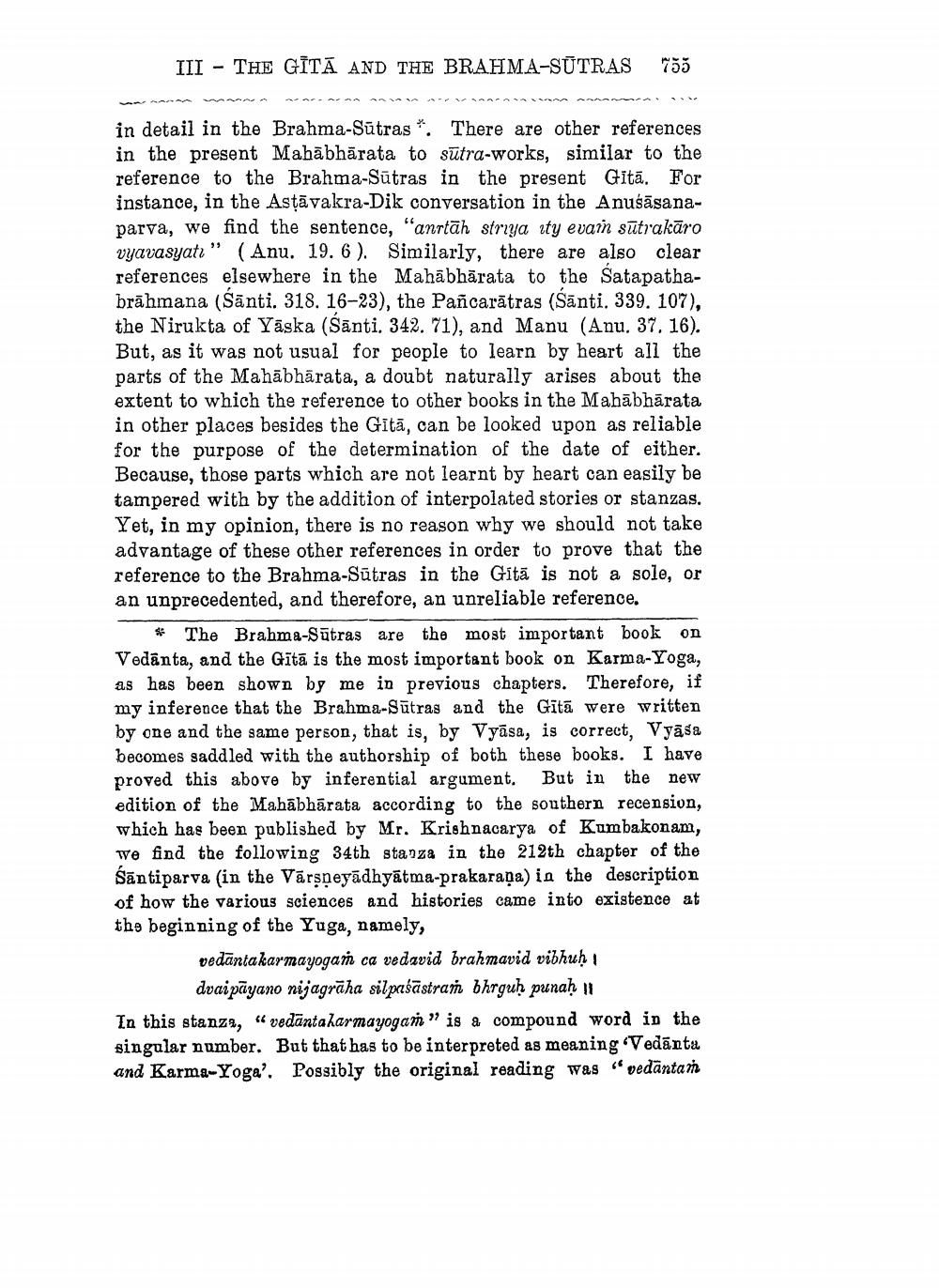________________
III - THE GITĀ AND THE BRAHMA-SŪTRAS 755
in detail in the Brahma-Sūtras. There are other references in the present Mahābhārata to sūtra-works, similar to the reference to the Brahma-Sūtras in the present Gītā. For instance, in the Astāvakra-Dik conversation in the Anušāsanaparva, we find the sentence, "anrtāh striya aty evam sūtrakāro vyavasyatı" (Anu. 19. 6). Similarly, there are also clear references elsewhere in the Mahābhārata to the Satapathabrāhmana (Sānti. 318. 16-23), the Pañcarātras (Sānti. 339. 107), the Nirukta of Yāska (Santi. 342. 71), and Manu (Anu. 37. 16). But, as it was not usual for people to learn by heart all the parts of the Mahābhārata, a doubt naturally arises about the extent to which the reference to other books in the Mahābhārata in other places besides the Gītā, can be looked upon as reliable for the purpose of the determination of the date of either. Because, those parts which are not learnt by heart can easily be tampered with by the addition of interpolated stories or stanzas. Yet, in my opinion, there is no reason why we should not take advantage of these other references in order to prove that the reference to the Brahma-Sūtras in the Gitā is not a sole, or an unprecedented, and therefore, an unreliable reference.
* The Brahma-Sūtras are the most important book on Vedānta, and the Gītā is the most important book on Karma-Yoga, as has been shown by me in previous chapters. Therefore, if my inference that the Brahma-Sūtras and the Gītā were written by one and the same person, that is, by Vyāsa, is correct, Vyāsa becomes saddled with the authorship of both these books. I have proved this above by inferential argument. But in the new edition of the Mahābhārata according to the southern recension, which has been published by Mr. Krishnacarya of Kumbakonam, we find the following 34th stanza in the 212th chapter of the Sāntiparva (in the Vārşneyādhyātma-prakaraṇa) in the description of how the various sciences and histories came into existence at the beginning of the Yuga, namely,
vedāntakarmayogam ca vedavid brahmavid vibhuḥ 1
dvaipāyano nijagrāha silpaśāstran bhrguh punaḥ 11 In this stanze, "vedānta harmayogam" is a compound word in the singular number. But that has to be interpreted as meaning Vedānta and Karma-Yoga'. Possibly the original reading was "vedāntan




